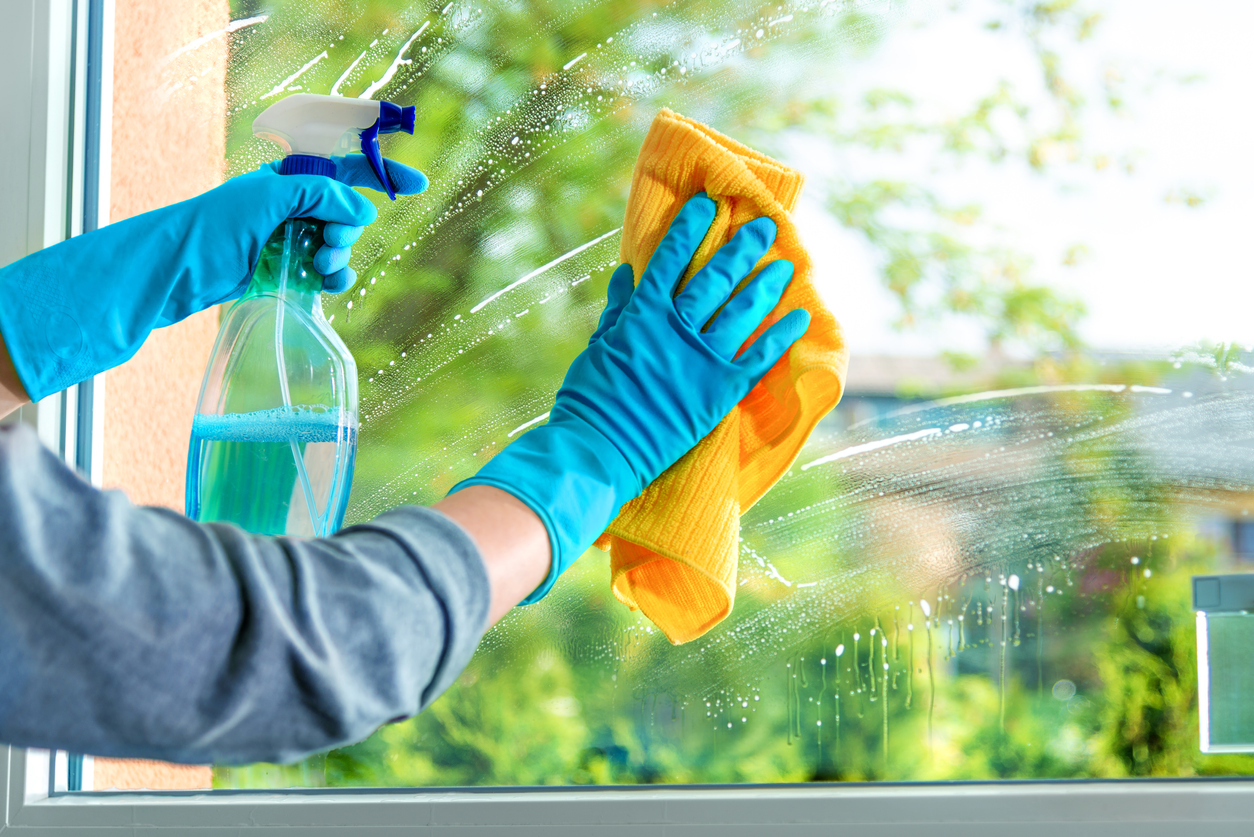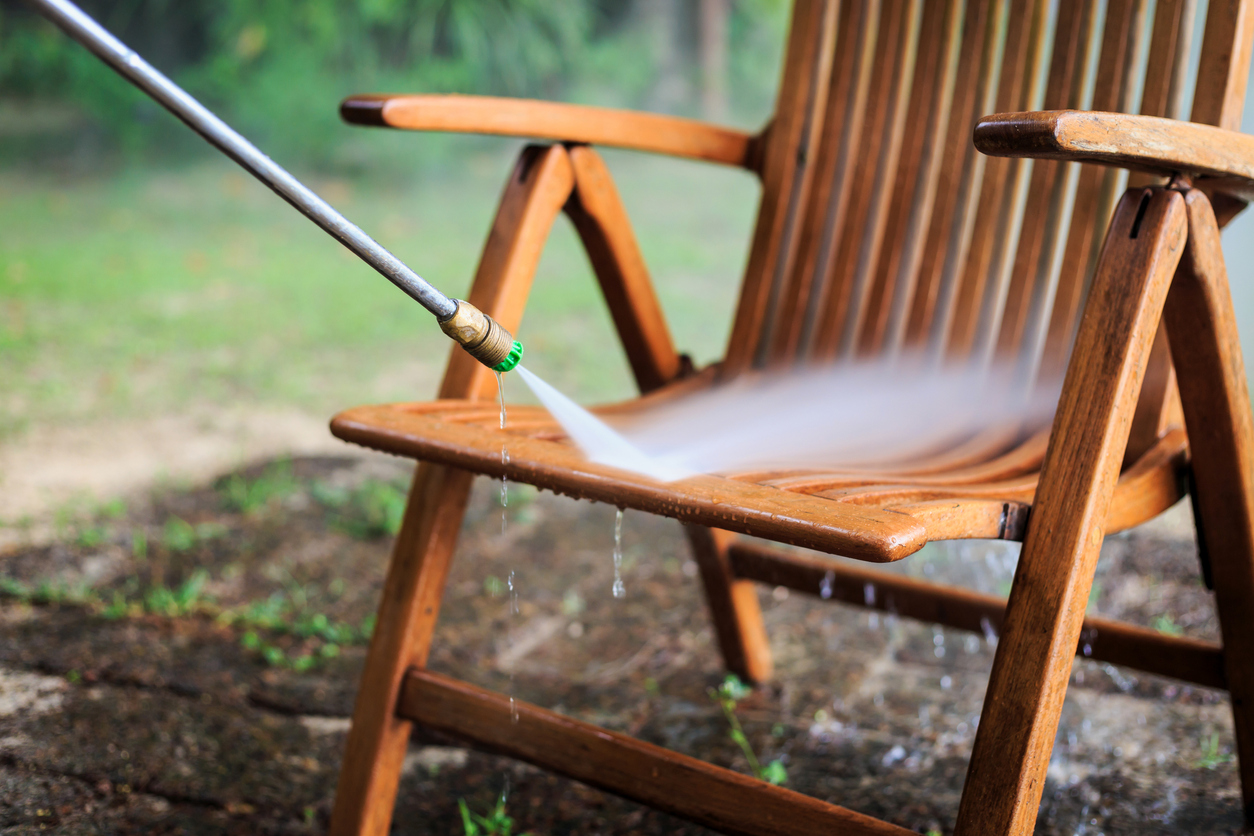We may earn revenue from the products available on this page and participate in affiliate programs. Learn More ›
This year, many parts of the country have enjoyed such a mild winter that even in the Northeast, spring weather seems like it’s just around the corner—if it hasn’t arrived already. Take advantage of the moderate temperatures to get a head start on what should be an annual spring home maintenance routine.
Exterior Inspection
“It’s good to do a walk-around of your property, especially after a storm,” says Curtis S. Niles, Sr., owner of Armored Home Inspections, Upper Darby, PA, and president of the National Association of Home Inspectors (NAHI). “Winter is tough on roofs and chimneys.” It can also take its toll on windows, walls, foundations, gutters and decks.
Roof
You don’t need to climb up there yourself; with binoculars and a keen eye, you can probably spot trouble. Do you see any shingle-shift, suggesting that some fasteners may have failed and need replacing? Any cracked or missing shingles? What about nail-pops? “We call them eyebrows,” Niles explains. “It’s when nails push the tabs of the shingles up, allowing water to get in where those nails are coming through.” All will need to be addressed to keep your roof at peak performance.
Chimney
If you have a masonry chimney, check the joints between bricks or stones. Have any fallen out? Is there vegetation growing out of them? Each signals water infiltration. Also, look for efflorescence—”a white calcium-like deposit that indicates your masonry joints are no longer repelling water but absorbing it,” says Niles. Consider re-sealing masonry with a clear, impermeable or water-resistant barrier material (like Thoroseal products). Brush it on, small areas at a time; let it absorb for 15 minutes, then reapply—it may need a couple of applications.
Exterior Walls
Whether you have wood siding, stucco or brick, look for trouble spots, especially under eaves and near gutter downspouts. Water stains normally indicate that your gutters are not adequately containing roof runoff. If you have wood siding, check for openings, damaged areas or knots that have popped out, making way for carpenter ants, woodpeckers and other critters that may nest in or burrow through.
Foundation
When inspecting the exterior of your home, be sure to examine the foundation from top to bottom for masonry cracks. “Routine caulking by homeowners won’t do the job,” says Niles. “Hire a foundation specialist who can employ a two-part epoxy injection system that will bond cracks chemically,” he adds.
Windows
Leakage around windows will admit warm summer air and let cooled indoor air escape, so be sure to check that any caulking and weather stripping you have in place has remained intact. “A tight seal is the first line of defense against air and water,” says Marty Davis, marketing manager, Simonton Windows, Columbus, OH. If you experienced condensation inside the glass on double- or triple-glazed windows during the winter months, the weather seal has been compromised, and either the glass or the window will need to be replaced.
Spring-clean your windows—inside and out—with a store-bought or homemade window cleaner (one cup rubbing alcohol, one cup water and a tablespoon of white wine vinegar will work just fine) and either a squeegee or a soft cloth. Never use abrasive cleaners or a high-pressure spray washer. You don’t want to scratch the glass or crack the caulking around each unit. If screens were on all winter, remove and clean them with mild detergent. Lay them on a dry surface, like a driveway to air-dry before putting them back on. “Never power-wash screens,” urges Davis, “it could damage the mesh.”

Interior Maintenance
General Cleaning
Spring is a good time to clean areas of the house that often go neglected. Dust or vacuum chair rails, window casings, tops of wall-mounted cabinets and ceiling fans. Launder or dry-clean fabric draperies and use a damp cloth to clean wood and vinyl blinds. Vacuum upholstered furniture and mattresses and consider renting a carpet cleaner—anything you can do to remove settled dust, mites, and allergens will make for a cleaner, and healthier, home.
If you detect grease residue in the kitchen, consider washing cabinets, backsplashes and walls with warm water and mild detergent. The same is true in the bathroom, where soap residue and fluctuations in heat and humidity combine to create the perfect breeding ground for mold and mildew. While you’re cleaning tile, look for areas of worn or missing grout, as these may lead to more serious water damage if not repaired.
Air Conditioning
Just as you readied your furnace for fall, now is the time to make sure that air conditioning units are in good working order for the warmer months ahead. Change the filter, check hose connections for leaks, and make sure the drain pans are draining freely. In addition, vacuum any dust that has settled on the unit and connections; over time it can impact the air conditioner’s effectiveness. If you suspected problems with the efficiency or performance of the unit last summer, now is the time to call in a professional to check it out.
Attic
Search for signs that indicate insects and critters have colonized. Also, search aggressively for mold, which often takes the form of “gray or black blotches that look like staining,” according to Tim Gentry, vice president of technical services, DaVinci Roofscapes, Kansas City, KS. Proper insulation and good ventilation will deter mold growth in the attic, so take action now to prevent the problem from developing in the warmer months ahead.
Basement
The basement—prone to dampness and insects—must be part of any thorough seasonal maintenance effort. Dampness suggests higher than normal relative humidity, inadequate ventilation and the need for a dehumidifier. Check the base of poured-concrete walls. “Cracks start from the bottom up, not the top down,” Niles points out. “If there’s water penetration, it’ll show at the bottom of those cracks.” And be sure to use a flashlight to examine exposed framing. “If you see even a quarter-inch or so of tunneling on the wood,” says Niles, “call a pest control company immediately.”
Leaks
Spring is a good time to check for leaky faucets, clogged drains, and sweaty pipes. Check under the kitchen and bathroom sink to make sure connections on pipes and hoses are properly sealed, and look for any wetness around the dishwasher that could signal an existing or potential problem. The same is true of your laundry room; check washer machine hoses for cracks, bulges or dampness. The same is true for hot water heaters, which may show sign of corrosion and leaks.

Outdoor Maintenance
Lawn
Rake the lawn to remove any branches, debris and leaves that you might have missed in the fall; if left, they can suffocate the grass beneath. During the winter, soil compaction, along with chemical changes altering your soil’s PH, may have left your lawn vulnerable to weed growth and other issues. Even if you can’t see weeds, they are more than likely waiting for optimum conditions to propagate. If you want to prevent them from germinating, consider an organic herbicide; fertilizers are better suited to the fall.
Make sure outdoor water systems—pipes, faucets, and in-ground sprinkler systems—are in working order. Once the ground thaws completely, start preparing new garden beds for summer plants. And take stock of your garden tools and lawn-maintenance equipment, including lawn mowers, trimmers and hoses.
Decks and Patios
Look for warped, loose or splintered boards, and do a good sweep to remove any leaves and debris accumulated in the space between boards. “Whether it’s wood, plastic or composite, a deck should be cleaned every year to extend its life,” says Chuck Harris, owner, Custom Lumber Manufacturing Co., Dothan, AL. If the finish on your wood deck is faded or worn, now is the time to clean, stain, and reseal it. If you have composite decking, follow manufacturers’ recommendations on seasonal care. The same is true for wood and composite fences, pergolas, trellises and other structures. If you have a stone patio, a simple hose down provide be all the maintenance required (unless you detect moss or staining, in which case a more serious cleaning may be necessary).
Outdoor Furniture
If you stored your lawn furniture for the winter, bring it outdoors and give it a hose rinse, or wash it with a mild detergent. For metal furniture, check for signs of rust or paint erosion; a simple remedy of spray enamel will prevent further damage from sun, rain and humidity in the months ahead.
Grills
If your gas grill has remained idle over the winter months, check burner jets for clogs and obstructions, and be sure that gas hoses and connections are sound and secure. You’ll also want to check for propane. For charcoal grill owners, make certain your grill is clean of ash and free of grease residue. It’s a good habit to adopt throughout the grilling season, not just in the spring.

